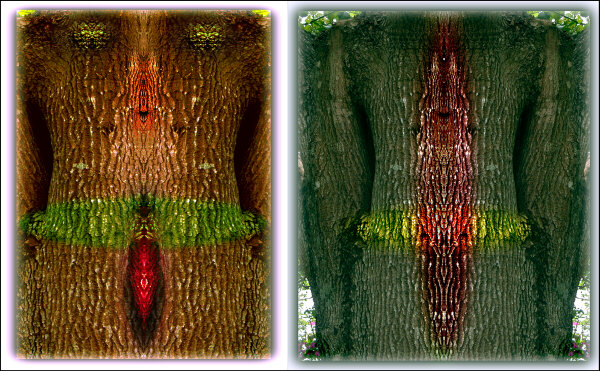Retrato de Familia
|
Each generation takes leave from the world to allow for the coming of future generations. Inevitably, we replace the people we love most dearly. What remains and what is forgotten? How are family traditions born, and how do they enable us to retrieve the experience of those who came before us?
From the Introduction to the Exhibit, Retrato de Familia |
 And so began an art exhibit in the colonial town of Antigua, Guatemala. On a dreamy night with a full moon, far away from the sky-scraped Upper West Side, in an area I don't associate with my Jewish brethren, I happened upon a gala art show by three Jews from Guatemala City. Who knew?
And so began an art exhibit in the colonial town of Antigua, Guatemala. On a dreamy night with a full moon, far away from the sky-scraped Upper West Side, in an area I don't associate with my Jewish brethren, I happened upon a gala art show by three Jews from Guatemala City. Who knew?
Re-trato de familia (Family Portrait) links individual bodies of artwork by the Perlmuth Family: a grandmother, her son Mario, and his two sons, Jaime and Igal, in one shared exhibition space. The exhibit was extraordinary on many levels: however rare it is for families today to pass down crafts or trades, here were three generations of a family not only producing art but creating, each in its own unique way, art that discloses new ways of expressing and understanding reality. And a Jewish voice in a Central American country rich in history and culture, one that is thoroughly rooted in its Mayan, Christian and colonial past. Yet Re-trato de Familia succeeds in providing insight into how artistic skills and aesthetic sensibilities can be passed on from one land of the Diaspora to another. The Perlmuth family seems to have engaged in a cross-generational commentary evoking a dialogue between stability and movement, despair and ecstasy.
As I walked through the exhibit, I was impressed by the combined vision of the generations. The earliest of the works were created at the turn of the century by Annie Listwa, mother, grandmother and first photographer in the family. Honored as the foundation for the other works created by her progeny, she is ironically, the youngest artist in this exhibition, and the themes present in her diary pages and her images--exile, death, and reincarnation --concern her descendants as well. Old fashioned and ancient faces peer out from very Western, albeit dated, photographs.
 Perhaps Igal's work should be seen as an abstract modern commentary, likened to
the more expressionistic Daumier print Gargantua, that depicted the French government. Igal's photographs are an assertive celebration of color and texture, an intimate confrontation with the historical facts of conflict and mass migration. I felt the immediacy of migration as I stepped into his exhibit, and I was surrounded by multiple images of trains. All the images present the boxcars close up, without sky or earth. Some have shut windows, others, with identifying marks stenciled on their sides, like tattoos. They were closed forms, investigations in texture and form, shutouts with their stories within. At the time, I didn't know the artist was Jewish (should that matter?) but I felt discomfort while a claustrophobia came over me. In their silence, the images shrieked for attention. I thought, what were these forced migratory symbols doing in Central America?
Perhaps Igal's work should be seen as an abstract modern commentary, likened to
the more expressionistic Daumier print Gargantua, that depicted the French government. Igal's photographs are an assertive celebration of color and texture, an intimate confrontation with the historical facts of conflict and mass migration. I felt the immediacy of migration as I stepped into his exhibit, and I was surrounded by multiple images of trains. All the images present the boxcars close up, without sky or earth. Some have shut windows, others, with identifying marks stenciled on their sides, like tattoos. They were closed forms, investigations in texture and form, shutouts with their stories within. At the time, I didn't know the artist was Jewish (should that matter?) but I felt discomfort while a claustrophobia came over me. In their silence, the images shrieked for attention. I thought, what were these forced migratory symbols doing in Central America?



Singing God's Praises:
Psalms and Authenticity
Josh Feigelson
Two Prayers for the Days of Awe
Rabbi Zalman Schachter-Shalomi
How can you be gay and Jewish?
Jay Michaelson
Hiding your Sins
Hal Sirowitz
Retrato de Familia
Bara Sapir
Jews and Bush
An Online Resource Guide
Archive
Our 550 Back Pages
Saddies
David Stromberg
Zeek in Print
Spring/Summer 2004 issue now on sale!
About Zeek
Mailing List
Contact Us
Subscribe
Tech Support
Links
From previous issues:
Genuine Authentic Gangsta Flava
Dan Friedman
And the Jester Sang for the King and Queen
Bex Schwartz
Some things have changed, some have stayed the same
Jay Michaelson